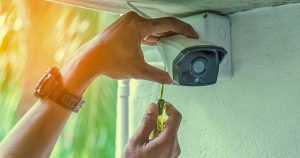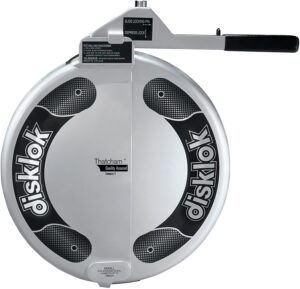Dealing with a Car Break-In? Here’s What to Do
We rounded up our best auto-safety content since it’s Auto Theft Prevention month:
Few things will put a damper on your day like realizing you’ve been the victim of an auto break-in. Unfortunately, it’s far from a rare occurrence—thousands of people deal with auto break-ins every year.
In the event you’ve just experienced a car break-in, here is a quick guide to help you know what to do next, plus a few tips to help you secure your vehicle against future break-ins.
1. Assess and record the damage
If you approach your car and discover a broken window or a picked lock, don’t enter or move the car at all. Instead, start documenting the details of the break-in from the outside.
Take pictures of the windows, doors, trunk, tires, and any visibly damaged areas of the car. As tempting as it may be to climb into the vehicle to further document the damage, refrain from doing so, as you may taint existing evidence.
In addition to taking pictures, make a written document. List the damages done to the car, as well as anything that may have been stolen from the vehicle. The more specific documentation you can provide, the more likely your insurance company will come to a favorable decision about reimbursements.
2. Notify the police and file a report
After you have a clear idea of the damage that’s been done, contact the police and make them aware of the break-in.
Depending on the severity of the crime and where it occurred, the reporting process may differ somewhat. In many cities, local law enforcement will send a police officer over to you to assess the situation and file the report on-site. In some cases, however, you will need to go to the police station in person or visit the station’s website to file a report. If your city requires you to come to the station, don’t drive the car in question to get there—again, you don’t want to interfere with evidence from the crime. Rather, take public transportation, or ask a friend or family member for a ride.
When it comes time to file the police report, be sure to present your driver’s license, vehicle registration, insurance information, and a description of what was damaged or stolen.
3. Curb identity theft and cancel credit cards
One of the biggest risks resulting from a car break-in is identity theft. If a perpetrator gets ahold of your name, birthday, and/or Social Security number, they might have everything needed to steal your identity.
To avoid becoming one of the 17.6 million Americans who have their identities stolen in a given year, contact one of the top three credit bureaus—Equifax, TransUnion, and Experian—to place a fraud alert on your account.
Additionally, if you notice your credit or debit cards were taken during the break-in, immediately alert your bank to the theft. A bank representative can help you identify any fraudulent charges, cancel the stolen cards, and request new cards.
4. File a claim with your insurance
The decision to file an insurance claim or not will likely depend on how much damage was done to your car and what was stolen during the break-in. If the dollar amount of those damages significantly exceeds your deductible, then you may want to file an insurance claim.
Keep in mind that not all claims will go through the same insurance policy. Automobile damage, including broken windows or scratched paint, will be filed on an auto insurance claim, while stolen personal items will need to be addressed through a homeowners or renters claim.
In either case, you will need to contact your insurance agent, give them the police report number, and then send them the information about the break-in. If your insurance company needs any more details, they will request them from you as you are navigating the claim process. Your auto insurance company should also direct you as to how to get your car repaired, if needed.
Protecting your car from future break-ins
After dealing with the aftermath of a break-in, the last thing you want to do is go through the process again. As such, you’ll want to take additional measures to help ensure that your car won’t get broken into a second time. Here are a few good safety practices to prevent that from happening.
- Avoid parking your car in remote or poorly lit areas
- Don’t leave your car unattended for several days at a time
- Keep your car doors locked
- Roll up your windows completely
- Remove valuables from the car or hide them out of view
If you’re already implementing those standard safety practices and want to go one step further, consider investing in a car alarm system. Our car alarm guide can help you pick a good aftermarket option for your vehicle.
There is no doubt that being victim of a car break-in is a painful and frightening occurrence, but thankfully, there are steps you can take to make the situation right and to reduce the risks of future problems. Use the tips above to handle—and prevent—an automotive break-in, and you’ll be back on the road in no time.
Recent Articles




The post Dealing with a Car Break-In? Here’s What to Do appeared first on SafeWise.
Article source here: Dealing with a Car Break-In? Here’s What to Do

